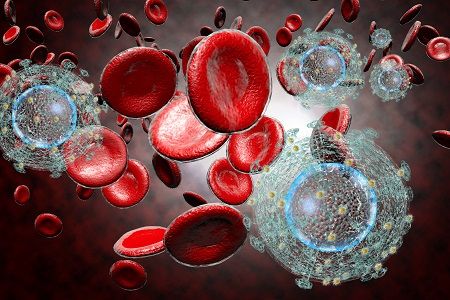Article
The Most Dominant HIV Subtype Is Also the Weakest
Author(s):
There are different subtypes of the human immunodeficiency virus (HIV), and the one at the forefront of the epidemic is actually the one that replicates very slowly.

There are different subtypes of the human immunodeficiency virus (HIV), and the one at the forefront of the epidemic is actually the one that replicates very slowly.
Researchers from Western University in Canada conducted an international 15-year study to uncover the natural progression of HIV in patients without treatment. Nearly one in 25 people in sub-Saharan (about 4.4% of the population) are infected with HIV, according to the World Health Organization. So the analysis was conducted within that group.
The team followed 303 women in Uganda and Zimbabwe who were newly infected with HIV, as described in EBioMedicine. It turns out that one group of women progressed to acquired immunodeficiency syndrome (AIDS) status more slowly than the others. Almost all of those women were infected with an HIV-1 strain, called subtype C.
This specific HIV strain replicates very poorly and slowly, making it what the researchers call the “wimpiest” subtype. The strain had a 2.5-fold slower rate of CD4 T-cell declines, as well as higher frequencies of long-term non-progression than other subtypes.
“Understanding that HIV subtype C is ‘wimpy’ is a difficult proposition because seeing it replicate poorly in tissue culture flasks does not mean that it will establish a slower infection in an infected individual. But that’s exactly what happens,” co-lead author, Eric Arts, PhD, chair of the Department of Microbiology & Immunology at Western University’s Schulich School of Medicine & Dentistry, said in a news release.
The interesting connection is that subtype C is actually the most dominant form of the virus in the world — infecting more than 15 million people. It is primarily found in Southern and Eastern Africa, India, Nepal, and parts of Brazil and China. Those infected with subtype A or D (which are also both dominate in Africa) in the study had faster disease activity.
“A lot of people see the dramatic growth of HIV subtype C and think it would be the strongest virus and that it’s beating all of the other subtypes but really, viruses are commonly transmitted, especially in southern and eastern Africa, in a period of asymptomatic disease,” said lead author, Colin Venner, a graduate student in Arts’ lab.
Since subtype C was found to be less virulent, this could be why it’s so prominent worldwide. People infected with HIV may not even know it, so they could be spreading the virus and possibly this less active strain.
“Unfortunately, we still don’t have a vaccine that is effective in protecting against HIV but in treatment, if we know a patient progresses very slow to disease and the virus is having a minimal impact on the immune system then all of the devastating consequences of delaying treatment, as we saw in North America, may not be as pronounced in patients infected with HIV subtype C,” Arts explained.
By knowing the virulence, Arts said, it can provide better information on how to treat different HIV subtypes.
Related Coverage:
The People Most at Risk for HIV Don’t Know About PrEP
Late HIV Testing Drives Transmission Rates
People with HIV and Chronic Pain Don’t Lose as Much Function as Expected





